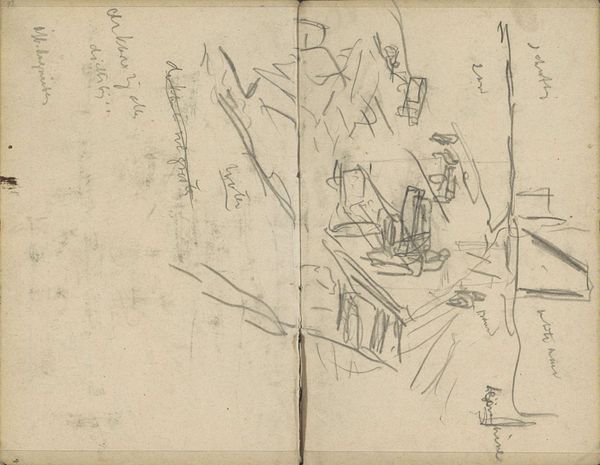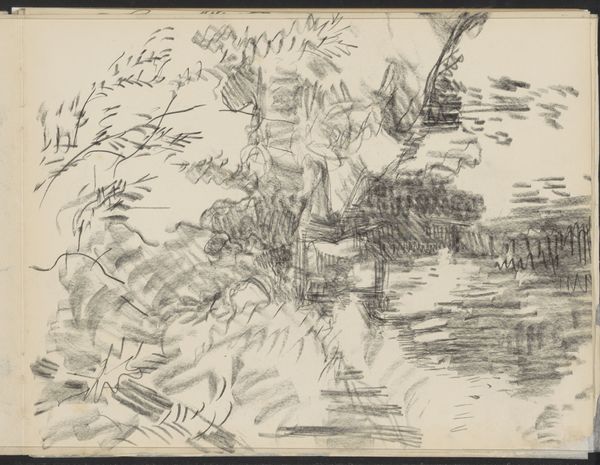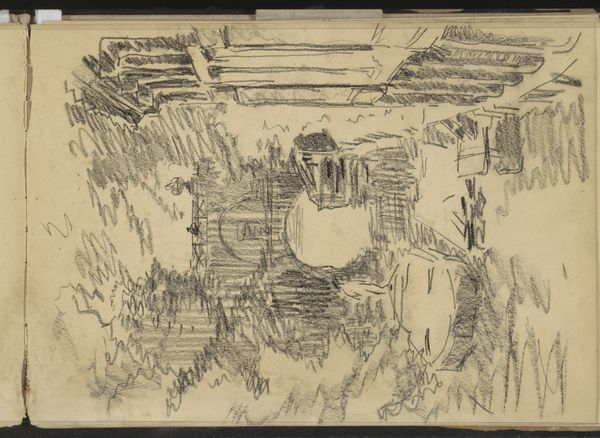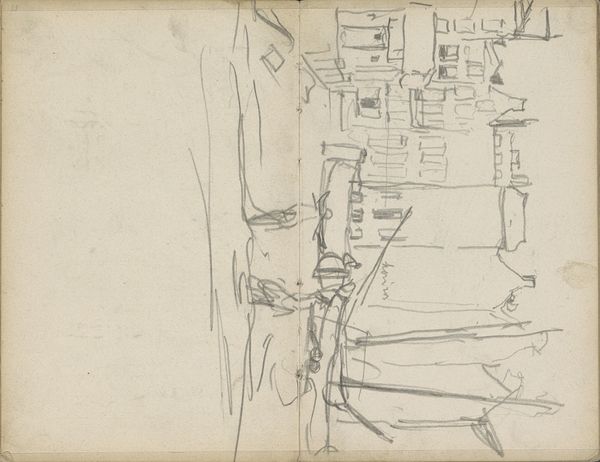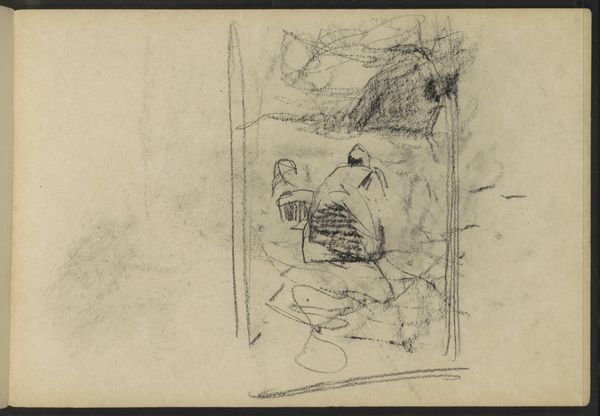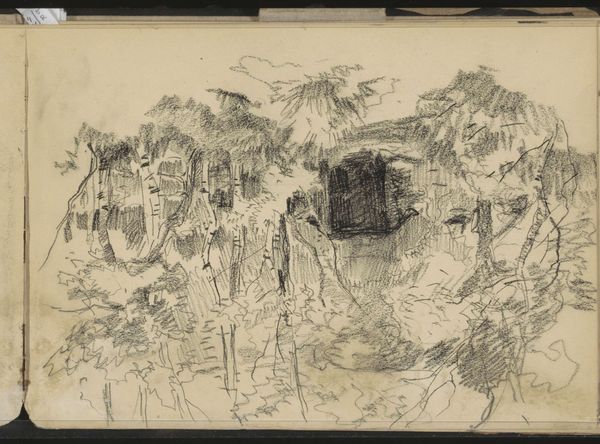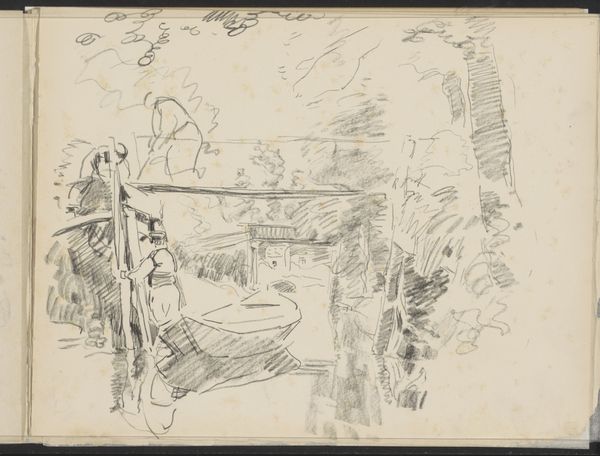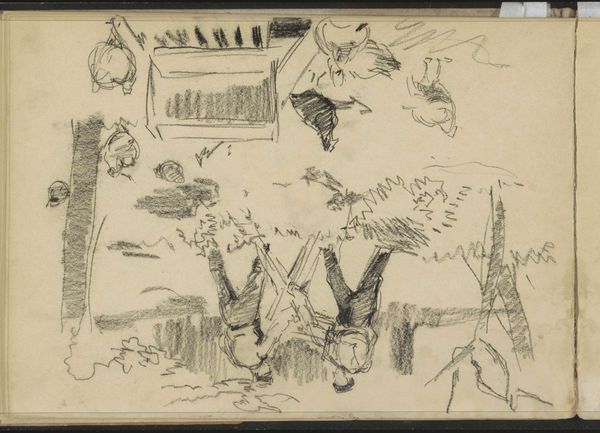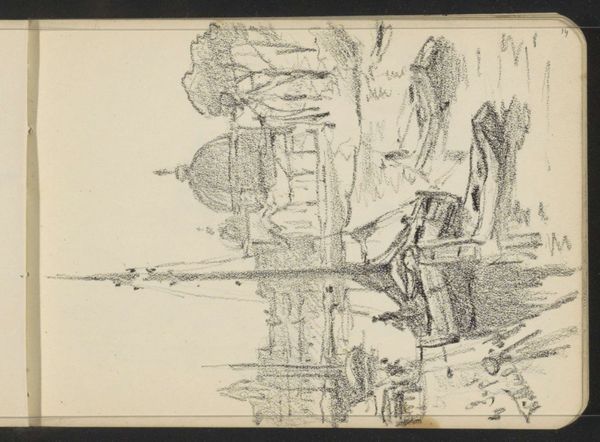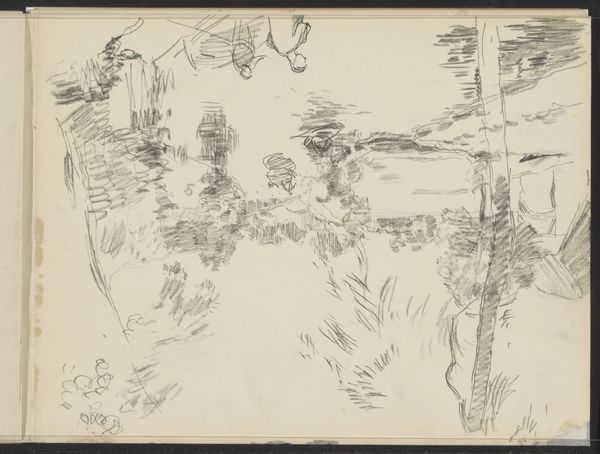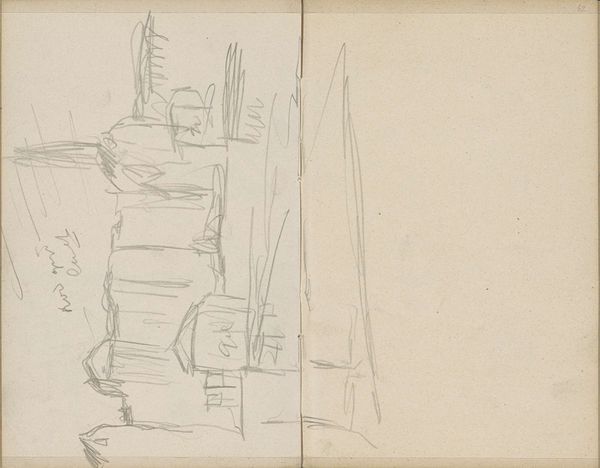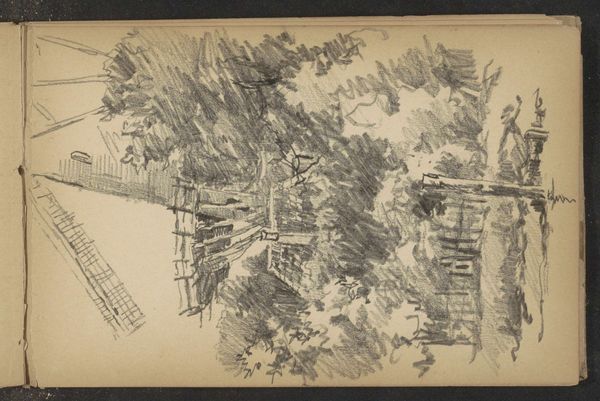
Copyright: Rijks Museum: Open Domain
Editor: This pencil drawing, "Roeiboten op een rivier langs enkele huizen," created by Willem Bastiaan Tholen sometime between 1885 and 1931, has a raw, immediate quality, almost like a snapshot in time. What is striking to me is how the trees take up a great part of the frame in comparison with the rowboats. What stands out to you in this piece? Curator: Indeed. Note how Tholen uses the graphite to generate spatial tension, a controlled modulation from negative space to dense thickets of marks that, although ostensibly representational, are compelling for their abstract arrangements. The river bank itself seems structurally unsound. Observe the near absence of tonal gradation, instead, stark juxtapositions define contours and forms. Editor: So you're saying that it’s the contrast that creates the depth and the dynamism? Is there a particular aspect that speaks to his artistic intent or stylistic choices? Curator: The dynamism emerges not merely from contrast, but from the assertive linearity that sculpts the composition. The artist's method, reducing detail to near calligraphic notations, is of interest, focusing on intrinsic properties and pure formalism. Editor: I see what you mean. Thinking about it as an almost abstract set of marks definitely changes how I view the sketch. Curator: Precisely. Sometimes by removing the expectation of perfect representation, one can gain a greater insight into how visual elements function to make something unique. I trust that we have gained a broader visual literacy to be able to look and learn, irrespective of representational content? Editor: Definitely. It is important to acknowledge the intent that drove these types of artworks in this timeframe.
Comments
No comments
Be the first to comment and join the conversation on the ultimate creative platform.
